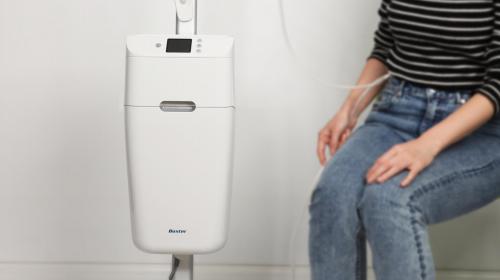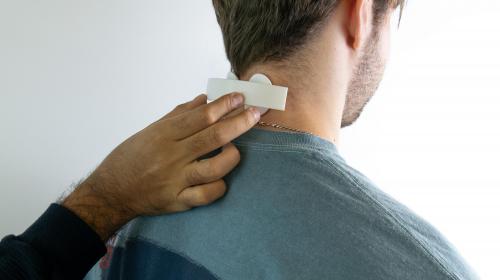
LIMBS & THINGS
Colles' Fracture Reduction Trainer
Fracture training model
for A&E medics
Designed in collaboration with Limbs & Things, IDC developed a realistic arm model to represent a Colles' fracture. The result was an adjustable model to help trainee doctors practice Colles’ fracture reduction techniques and plastering.
Colles’ Fracture Reduction Trainer
Limbs & Things are a leader in producing models of human anatomy for use in medical training and simulation. IDC were tasked with improving the performance, simplifying the assembly, and adapting the design to be manufacturable.
IDC’s engineers were briefed to develop an anatomically accurate model that included the lower and upper arm. The model includes an internal mechanism that represents the fractured bone. This can be adjusted to different tensions to change the retraction force. The break itself needs to feel the same as a human wrist, with realistic anatomical detail for the muscle, skin and bone. The team also needed to consider the design for manufacture; minimising the number of components and simplifying the assembly. With the skin being constantly touched during training, it also has the option for a replaceable hand and skin.

A realistic training experience
Colles’ fractures are breaks in the radius bone, close to where the bone joins the wrist. The Colles’ fracture reduction technique is a non-invasive procedure to re-set the bone. To do this the clinician has to extend the fracture, and manipulate the hand into the correct position.
The Limbs & Things model aims to provide a realistic training experience for doctors to practice this complicated technique, as well as plastering the newly set arm. The design allows for common mistakes to occur such as a partially reduced fracture. If the arm is not held correctly when plastered it will pop back to the original state.
The first challenge for IDC’s engineers was developing a design which mechanically simulated human wrist movement. The design was simplified from a number of strap components to a simple dual directional hinge with limiting features which made assembly easier.
Silicone was selected as the best material for a realistic skin, however the silicone’s low friction properties caused issues with the skin rotating around the inner structure of the arm and the skeletal structure of the hand. The team worked with our network of materials manufacturers to find a bonding material which was perfect for the job of bonding the two hand parts together. There are also a number of mechanical features to stop the skin sliding over the arm assembly.
The designers developed an all-in-one silicone skin piece which could be easily peeled off and replaced by the user if needed.
A key feature of the product is the ability to adjust the tension of the fracture retraction, which would enable progressive levels of difficulty in training to replicate the differences in muscle tension across the human population. The tension could be changed by adjusting a hidden screw located in the elbow.
The team also developed a clamping attachment on the upper arm, so the model could be fixed on a stand if needed. The skin was designed so that the internal mechanism and fixing features were hidden.


Design for manufacture was an important element of this project. Limbs & Things wanted to produce a design that could be 3D printed initially, and then injection moulded once volumes reached a suitable level. Much of the production was to be completed in-house by Limbs & Things.
The team was able to improve the performance at the same time as simplifying the assembly, successfully delivering a production ready design. The Colles’ Fracture Reduction Trainer is now in production and has received excellent feedback from clinicians.
Sign up to receive our top resources on product development and innovation.










